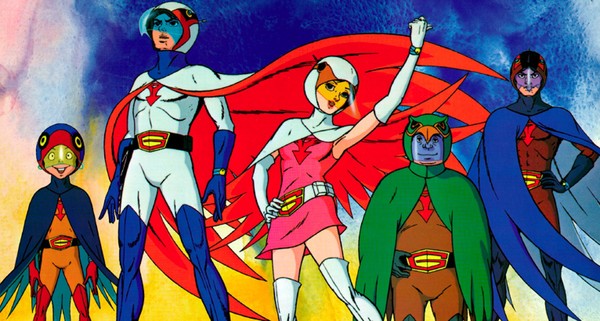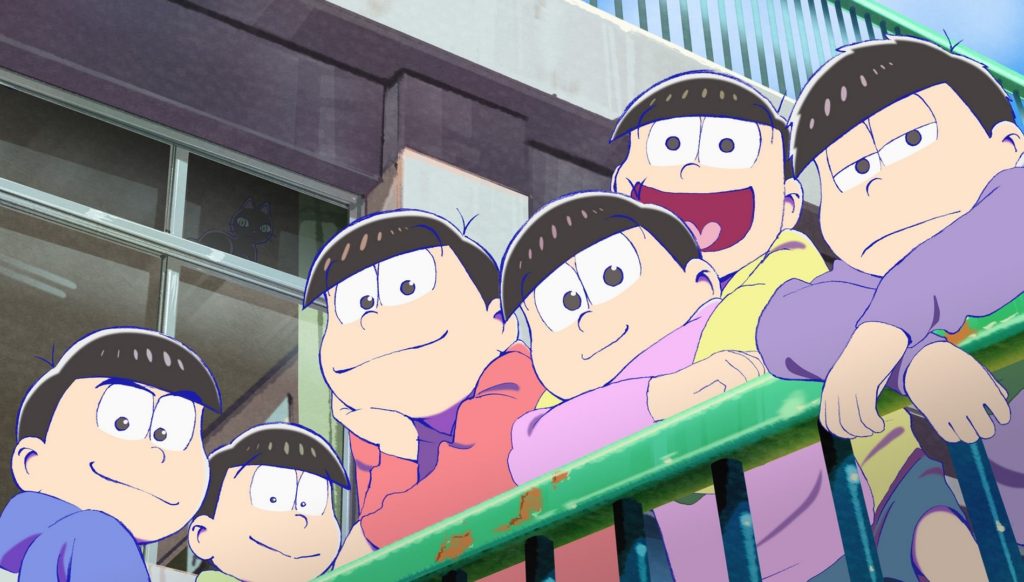
[ad_1]

Yuji Nunokawa, who died on Christmas Day, was not a well-known name among Anglophone anime fans, but he was a powerful figure in the Japanese cartoon business, instrumental in many of its international successes. Born in Sakata City, Yamagata, into a family of tailors, his initial career direction was in graphic design – even later in his career, as a studio boss, he would sometimes be found tweaking with logos and graphics for the shows he was running.
He graduated from design college in 1967, just as the first TV anime bubble was about to burst, and was batted from subcontracting studio to studio, working his way up from colourist to inbetweener, to a key animator on Robotan. He worked for Tsuburaya Pro on the company’s stand at the Japan World Expo, and was one of the early refugees from the troubled Mushi Production, participating in the setting up Soeisha, the forerunner of Sunrise, in the early 1970s.
“Japanese TV was still in its infancy, just like anime in the 1960s,” he said. “It took such a long time to make a programme that we brought in a lot of shows from overseas and broadcast those and in return we sold a lot of Japanese anime to foreign TV stations. Japanese anime was cheap, you see. ‘How much for this many?’ It was like we were running a fire sale. And now there are people overseas who’ve grown up watching anime… “

He was soon one of the creatives at Tatsunoko Production, in the middle of the rich and vibrant period that saw the studio come up with Time Bokan, Robot Hunter Cashaan and Science Ninja Team Gatchaman (a.k.a. Battle of the Planets). He worked at Tatsunoko for six years, helping to train some of the studio’s later star directors, including Mamoru Oshii, before his status changed from employee to freelance. His slow parting of the ways with Tatsunoko came after troubled finances, in which he had used the pseudonym Yu Sakata to moonlight for other companies just to pay his own bills, but also his shock at the death of the company’s inspirational founder Tatsuo Yoshida, in 1977 at the age of just 45. Although Nunokawa continued to work for Tatsunoko for a while, he was already becoming more involved in the setting up of a new company, Studio Pierrot in 1979.
Pierrot saw Nunoakawa’s career path, which had already taken him from the lowest rank on the animation ladder, through a stint in actual animation, to producer, to the position of kikaku, normally translated as Planning. This, too, is a form of producer – the word has a dozen possible translations in anime terminology – but one heavily involved in the creative and logistic ferment of making a show happen in the first place.

At Pierrot, Nunokawa pushed for producers and sponsors to understand that television’s obsession with ratings only mattered to advertisers. It was perfectly possible for a show to look like a complete dog in the ratings, and still to generate reasonable income in other areas. “Pierrot produced The Mysterious Cities of Gold, and domestically it was a total failure, but in France it’s so popular that almost everyone has heard of it,” he said. “In the 1980’s, Studio Pierrot produced Osomatsu-kun, which aired at prime time with a 25-26% [audience share],” he told Manga Tokyo. “But its merchandise didn’t sell as much as Osomatsu-san does. Osomatsu-san had a mere 2-3% [audience share], and it has had a large economic effect that we couldn’t have imagined in the old days. I’m sure we will see such surprises in the future, too.”
“It is hard to find another show that created a boom as large as Osomatsu-san,” he wrote in his book Osomatsu-san’s planning technique: Unraveling the secret of a hit, “even with shows that received higher viewership. Internet streaming and the word of mouth help spread the boom like wildfire.”

Setting up the animated adaptation of Rumiko Takahashi’s Urusei Yatsura, Nunokawa was conscious of the difficult line it would have to walk between titillation and satire. “Urusei Yatsura was going to be a work with a lot of exposure, right?” he told Otocoto.jp. “Since it was to be broadcast at 7:30 pm, I wanted to design it so that it would not make viewers feel uncomfortable.” In order to ensure it wasn’t all cheesecake, he drafted in Akemi Takada, a female designer he had worked with at Tatsunoko.
For Nunokawa, there was an economy of scale in producing a longer-running show, that fired his producer passions. “The animation costs come down when you break down the number of episodes,” he said. “That’s because it costs a lot to produce things like the settings and music at the very beginning. However, in the case that the show is only one cours [season], just when you think the settings are piling up they’re already finished and you have to start again with a new project. Then you have to bring a new director and staff together and it really costs a lot. If you also have a labour shortage, then your production capacity will be limited. That’s the biggest problem right now.”
There was, however, a certain glint in his eyes when he talked about the risks of a single-season anime, the chance to do something new and original, but with the heart-fluttering dangers of having to put merchandise into production before there was any guarantee that fans would want to buy it.

He was vocal about the various responsibilities of a producer, in scrabbling the sponsors together, managing their expectations and demands regarding product placement and responsibilities, and somehow assembling a team of creatives that can create a magical spark. “It was more important to have the ability to persuade sponsors before, but now it is definitely more important to have the ability to convey the charm of the project to others. I think that makes a big difference. To be honest, an ability to judge what sells isn’t that important for producers. Instead, they need to communicate the essence of the project to others and have the enthusiasm to select the staff members they want on their own for the project.”
His comments reflected the pressures of the sausage-factory elements of modern anime, where sponsors grew jaded and weary with hearing yet another pitch about a hot-headed teen who meets a mysterious girl in a magical otherworld. At Pierrot, Nunokawa oversaw the creation of a number of anime classics in varied genres, including Magical Angel Creamy Mami, Star Musketeer Bismarck (a.k.a. Saber Rider and the Star Sheriffs) and the sci-fi romance Kimagure Orange Road. He was a producer on Mamoru Oshii’s Dallos (1983) the first ever “Original Anime Video” to be released straight onto VHS, and on Hyper Police (1997) one of the earliest anime to flourish in the post-midnight slot that, today, is the home ground of most anime for grown-ups.

As the years went on, Nunokawa’s reign at Pierrot came to be associated with anime’s grandest cash-cows – adaptations of manga from the magazine Shonen Jump, which came with a ready-mix audience of teenage boys. These included global successes such as Naruto and Bleach, as well as Young Jump‘s Kingdom, a cunning attempt to crack the Chinese market with a fictionalised life of the First Emperor.
In later life, he embraced the pedagogic elements of being a senior in the anime world, helping to set up the Association of Japanese Animations, founding the NUNOANI school for animators, directors and producers, and also taking part in the seminal Anime-gaku academic collection. He was an instrumental figure in the creation of the Association of Japanese Animations’ Textbook for Animators, an expensive but invaluable work which I still have cause to regularly consult in search of precise terms for animation techniques or process explanations.
In every interview I have read with Nunokawa, he comes across as a producer with real sympathy, not only for his products, but for the way to best curate them with fans. For many years, he resisted a remake of Creamy Mami, not because he didn’t see any money in it, but because of his fears that it would not live up to audience expectations. “There’s a big risk in recreating a hit,” he said. I don’t want it to be something that old fans would say: “It’s not my ‘Creamy Mami, the Magic Angel.’”
Jonathan Clements
[ad_2]





